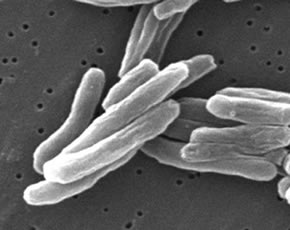
Reactivation of latent tuberculosis is a recognized risk of TNF inhibitor use. While there has been circumstantial evidence of greater risk with the monoclonal antibody TNF inhibitors (e.g. infliximab and adalimumab) compared with decoy receptor TNF inhibitors (e.g. etanercept), there have been few direct comparisons. Here, Dixon et al (Ann Rheum Dis 2010; 69: 522-528) explore drug-specific risk of tuberculosis among TNF inhibitor treated patients.
Methods
Rheumatoid arthritis patients enrolled in the British Society for Rheumatology Biologics Register (BSRBR) were studied. Incidence rates of tuberculosis were compared between TNF inhibitor treated patients (as a group and by drug) and non-biologic DMARD treated patients. Medical records were reviewed to verify identified tuberculosis cases, site of infection, and other characteristics. Information on screening for latent tuberculosis was not available.
Results
Among the 13,739 RA patients included, 10,712 were treated with TNF inhibitors. Non-biologic DMARD treated patients differed from TNF inhibitor treated patients: They were younger with significantly lower DAS28 and HAQ scores at baseline, a shorter RA duration by a median of 5 years, had been exposed to fewer prior DMARDs, and were less likely to be treated with steroids at baseline. Prior tuberculosis was reported in approximately 2% of both groups. Differences in baseline characteristics among TNF inhibitor treated patients were minimal.
A total of 39 incident tuberculosis cases were reported, all among the TNF inhibitor treated group. Thirteen cases occurred in patients off of TNF inhibitors, but within the 90 day window after prior exposure. Only 24 of the cases could be definitively verified. The incidence rate for tuberculosis was 39/100,000 person-years for etanercept, 136/100,000 person-years for infliximab, and 144/100,000 person-years for adalimumab. Thus, the incidence rate ratio for tuberculosis was more than 3-fold higher for infliximab and adalimumab treated patients compared to etanercept. Among tuberculosis cases, 62% were extrapulmonary and 28% were disseminated. Extrapulmonary and disseminated disease was less common in etanercept treated patients compared to infliximab or adalimumab. Median time to incident tuberculosis was 13 months for etanercept, 6 months for infliximab, and 18 months for adalimumab. Incident tuberculosis was higher among non-white TNF inhibitor treated patients compared to white. Among the 39 cases, 10 died within 12 months of their incident TB episode.
Conclusion
Although infrequent, incident tuberculosis was higher in TNF inhibitor treated patients compared to those receiving non-biologic DMARDs. Among TNF inhibitor treated patients, incident tuberculosis was more frequent in those receiving therapy with infliximab or adalimumab compared to etanercept.
Editorial Comment
This is the largest study to date to report drug-specific tuberculosis rates according to TNF inhibitor use. The more than 3-fold higher incidence rate among infliximab and adalimumab treated patients compared to etanercept is striking. TNF inhibitor treatment was not randomly allocated in this study, so there remains the possibility of bias (such as confounding by indication) as an explanation for the discrepancy, although this effect is probably not substantial enough to explain the difference. Additional data on other tuberculosis risk factors and prior screening would be helpful to further elucidate whether these cases could have been prevented, particularly considering the high rates of extrapulmonary and disseminated disease, and the high mortality rate after incident tuberculosis in this cohort.

